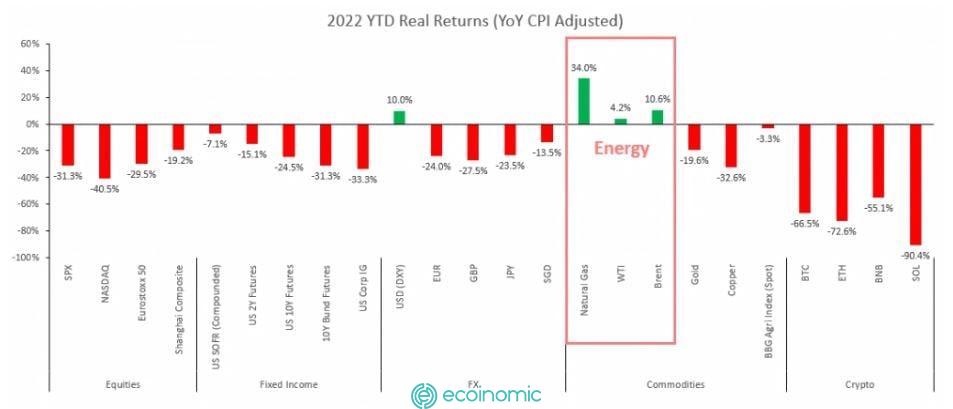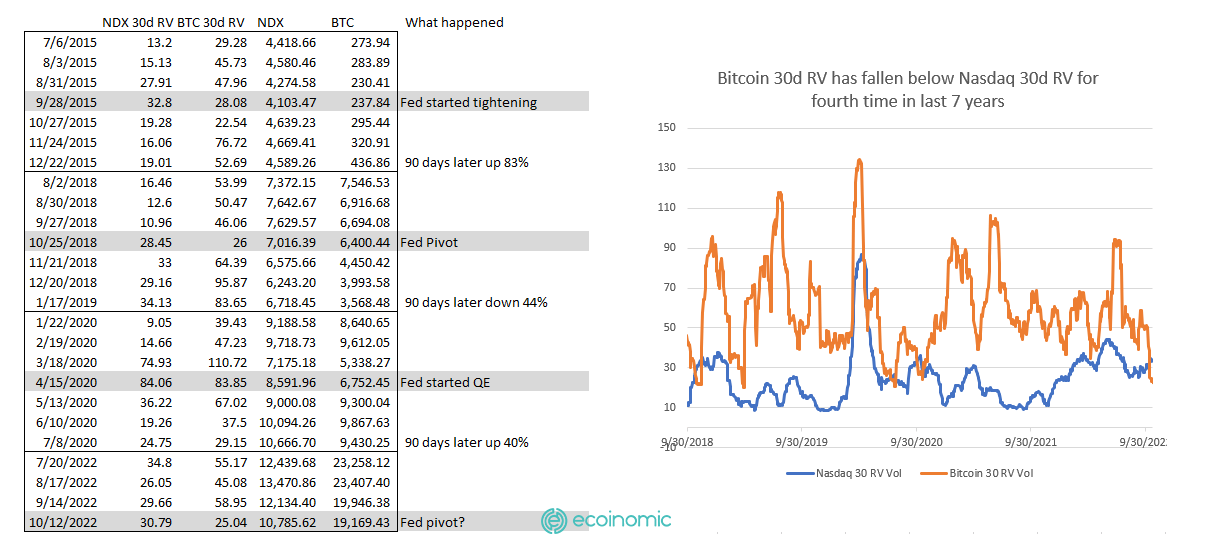Bitcoin and ether futures volumes are on track to clock annual lows for October as lower volatility dampens traders’ appetite.
Bitcoin futures volumes are just $667 billion so far this month, according to The Block’s data dashboard. While the month isn’t over yet, these volumes are far cry from September’s $1.05 trillion — and are on track to come in lower than August, when volumes were eclipsed by ether.
Ether futures surpassed bitcoin futures in August — registering $1.05 trillion versus $941 billion — as traders placed bets leading up to Ethereum’s switch from Proof-of-work to proof-of-stake. However, volumes have fallen since Ethereum’s upgrade, and crypto price action is now primarily dictated by macroeconomic factors.
Ether futures volumes are coming in much lower than bitcoin futures volumes, at just over $500 million so far this month.
The drop in volumes is primarily linked to the lack of volatility in crypto markets, LedgerPrime’s Laura Vidiella told The Block. “Volatility levels this month are the lowest they’ve been all year, and capital is moving elsewhere, even away from crypto,” she added.
Moody’s AAA corporate bond yield is showing about 5.41% currently, and these were yielding just 2.72% last year, while the long-term average is at 6.52%, Vidiella said — adding that, since capital is still denominated in the U.S. dollar, traders need to account for the Inflation rate and look at the real returns across asset classes.

Source: QCP Capital
For traders that don’t care about U.S. dollar denomination and want to increase their portfolio size by measurement of coin quantity, crypto options have been a good play this year. Even a simple weekly call overwriting strategy could have yielded about 15% across almost any token, Vidiella concluded.
Furthermore, this is just the fourth time in 10 years that the Nasdaq 30-day realized volatility (RV) has fallen below bitcoin’s 30-day RV, BlockFi’s global head of trading, Joe Hickey, told The Block. In the three previous occasions, this has happened — 2015, 2018, and 2020 — low volatility was followed by dramatic moves upward and downward over the next 90 days.

Source: BlockFi
“Following September 2015, bitcoin traded 83% higher over the next 90 days into the first Fed hike of that decade; October 2018 was followed by bitcoin trading 47% lower into a Fed pivot; and in March 2020, we saw bitcoin trade 40% higher into quantitative easing over the next 90 days,” Hickey said.
Based on this, Hickey doesn’t expect low volatility or light volumes to hang around much longer.
© 2022 The Block Crypto, Inc. All Rights Reserved. This article is provided for informational purposes only. It is not offered or intended to be used as legal, tax, investment, financial, or other advice.
















